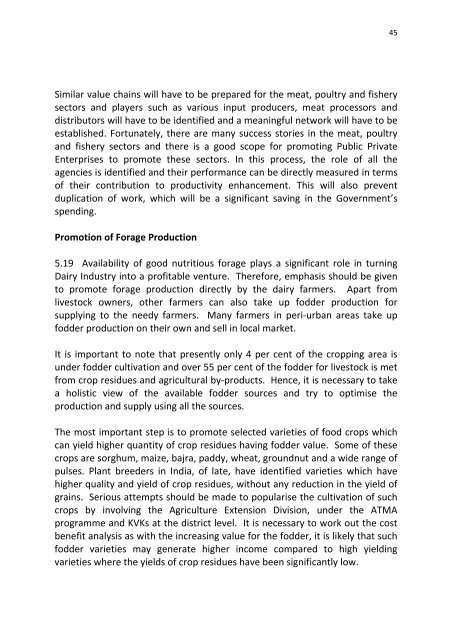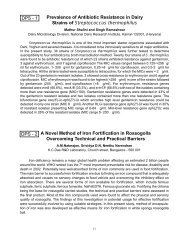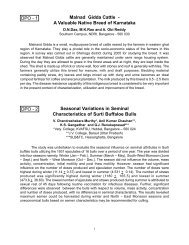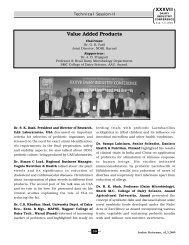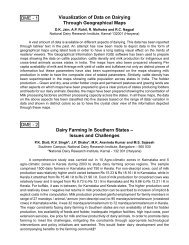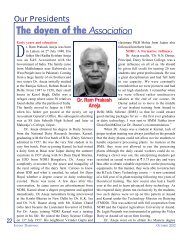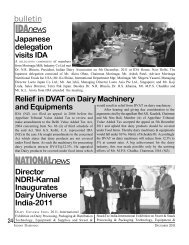Volume - Indian Dairy Association
Volume - Indian Dairy Association
Volume - Indian Dairy Association
- No tags were found...
You also want an ePaper? Increase the reach of your titles
YUMPU automatically turns print PDFs into web optimized ePapers that Google loves.
45Similar value chains will have to be prepared for the meat, poultry and fisherysectors and players such as various input producers, meat processors anddistributors will have to be identified and a meaningful network will have to beestablished. Fortunately, there are many success stories in the meat, poultryand fishery sectors and there is a good scope for promoting Public PrivateEnterprises to promote these sectors. In this process, the role of all theagencies is identified and their performance can be directly measured in termsof their contribution to productivity enhancement. This will also preventduplication of work, which will be a significant saving in the Government’sspending.Promotion of Forage Production5.19 Availability of good nutritious forage plays a significant role in turning<strong>Dairy</strong> Industry into a profitable venture. Therefore, emphasis should be givento promote forage production directly by the dairy farmers. Apart fromlivestock owners, other farmers can also take up fodder production forsupplying to the needy farmers. Many farmers in peri‐urban areas take upfodder production on their own and sell in local market.It is important to note that presently only 4 per cent of the cropping area isunder fodder cultivation and over 55 per cent of the fodder for livestock is metfrom crop residues and agricultural by‐products. Hence, it is necessary to takea holistic view of the available fodder sources and try to optimise theproduction and supply using all the sources.The most important step is to promote selected varieties of food crops whichcan yield higher quantity of crop residues having fodder value. Some of thesecrops are sorghum, maize, bajra, paddy, wheat, groundnut and a wide range ofpulses. Plant breeders in India, of late, have identified varieties which havehigher quality and yield of crop residues, without any reduction in the yield ofgrains. Serious attempts should be made to popularise the cultivation of suchcrops by involving the Agriculture Extension Division, under the ATMAprogramme and KVKs at the district level. It is necessary to work out the costbenefit analysis as with the increasing value for the fodder, it is likely that suchfodder varieties may generate higher income compared to high yieldingvarieties where the yields of crop residues have been significantly low.


